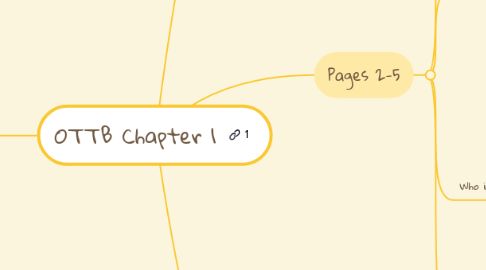
1. Pages 6-10
1.1. How the Church Interprets Inspired Writing
1.1.1. Magisterium
1.1.1.1. teaching authority of the Catholic Church
1.1.1.2. Pope, Bishops, etc Teach and interpret
1.1.2. on-going interpretation by all people
1.1.3. 3 criteria for interpreting scripture
1.1.3.1. 1. look at the whole scripture
1.1.3.2. 2. how does the Church look at the passage
1.1.3.3. 3. Look at the big picture-- what else is true in the whole context of revelation or God's plan?
1.1.4. What are the languages of the Bible:
1.1.4.1. Hebrew
1.1.4.2. Aramaic
1.1.4.3. Greek
1.1.5. 2 Senses of Scripture
1.1.5.1. Literal
1.1.5.1.1. foundational
1.1.5.1.2. what do the words mean?
1.1.5.1.3. the words of something in the Bible
1.1.5.1.4. the words of a metaphor or parable
1.1.5.2. Spiritual
1.1.5.2.1. allegorical
1.1.5.2.2. moral
1.1.5.2.3. anagogical
1.1.6. Important to recognize that we are reading translations of the original languages
1.1.7. This class uses the New American Bible
1.1.8. Inspiration
1.1.8.1. human authors were inspired by God to write the Bible
2. Pages 16-18
2.1. How Important is the Old Testament in the Life of the Church?
2.1.1. key part of scripture
2.1.2. all books are inspired by God
2.1.3. contain key teachings
2.1.4. typology
2.1.4.1. reading OT in light of the New Testament
2.2. Studying the Old Testament: Final Thoughts
2.2.1. Bible written under the inspiration of the Holy Spirit
2.2.2. Human authors
2.2.3. Need to read critically to find the message of the scripture
2.2.4. OT = primary source of faith
3. Pages 2-5
3.1. Introduction
3.1.1. Journey single step
3.1.2. Inspired Word of God
3.2. What Books Make up the Old Testament?
3.2.1. Old Testament aka Hebrew Scripture
3.2.2. Library of Books
3.2.3. Catholics have 46 Books
3.2.4. 1000 BCE- 150 BCE
3.2.5. Canon
3.2.5.1. official list of books in the Bible
3.2.6. Deuterocanonical
3.2.6.1. second canon
3.2.6.2. Not in the Jewish Bible
3.3. Who is God?
3.3.1. YHWH
3.3.1.1. too sacred to say out loud
3.3.1.2. sign of respect to use the Lord
3.3.1.3. Adonai= replacement for YHWH
3.3.1.4. Adonai translates as "Lord"
3.3.2. Tradition
3.3.2.1. Gospel passed down through the ages
3.3.2.2. interpreted by the Church
3.4. Knowing the Basic Story Line
3.4.1. loving relationship between God and God's people
3.4.2. ups and downs in this relationship
4. Pages 11-13
4.1. Classifying and Arranging the OT Books
4.1.1. Jews division of the bible
4.1.1.1. Law (Torah)
4.1.1.1.1. First 5 books of Jewish scripture
4.1.1.2. Prophets
4.1.1.3. Writings
4.1.2. Christians have a different arrangement
4.1.2.1. Pentateuch
4.1.2.2. Historical Books
4.1.2.3. Wisdom Books
4.1.2.4. Prophetic Books
4.1.3. the Bible is not in chronological order
4.1.4. earliest books based on oral tradition
